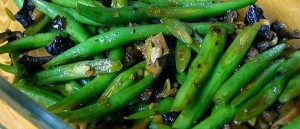Enteropathogenic Escherichia coli (EPEC) is an important foodborne pathogen that potentially causes infant and adult diarrhea.
 The occurrence and characteristics of EPEC in retail ready-to-eat (RTE) foods have not been thoroughly investigated in China. This study aimed to investigate EPEC occurrence in retail RTE foods sold in the markets of China and to characterize the isolated EPEC by serotyping, virulence gene analyses, antibiotic susceptibility test, and molecular typing based on enterobacterial repetitive intergenic consensus–polymerase chain reaction (ERIC-PCR).
The occurrence and characteristics of EPEC in retail ready-to-eat (RTE) foods have not been thoroughly investigated in China. This study aimed to investigate EPEC occurrence in retail RTE foods sold in the markets of China and to characterize the isolated EPEC by serotyping, virulence gene analyses, antibiotic susceptibility test, and molecular typing based on enterobacterial repetitive intergenic consensus–polymerase chain reaction (ERIC-PCR).
From May 2012 to April 2013, 459 RTE food samples were collected from retail markets in 24 cities of China. E. coli in general, and EPEC specifically, were detected in 144 (31.4%) and 39 (8.5%) samples, respectively. Cold vegetable in sauce was the food type most frequently contaminated with EPEC (18.6%). Of 39 EPEC isolates, 38 were atypical EPEC (eae+) and 1 was typical EPEC (eae+bfpA+) by multiplex PCR assays. The virulence genes espA, espB, tir, and iha were detected in 12, 9, 2, and 1 of 39 isolates, respectively, while genes toxB, etpD, katP, and saa were not detected.
O-antigen serotyping results showed that among 28 typeable isolates, the most common serotype was O119, followed by O26, O111, and O128. Many isolates were resistant to tetracycline (64.1%; 25/39), ampicillin (48.7%; 19/39), and trimethoprim/sulfamethoxazole (48.7%; 19/39). ERIC-PCR indicated high genetic diversity in EPEC strains, which classified 42 strains (39 isolates and 3 reference strains) into 32 different profiles with a discrimination index of 0.981.
The findings of this study highlight the need for close surveillance of the RTE foods at the level of production, packaging, and storage to minimize risks of foodborne disease.
Occurrence and characterization of Enteropathogenic Escherichia coli (EPEC) in retail ready-to-eat foods in China
Foodborne Pathogens and Disease. -Not available-, ahead of print. doi:10.1089/fpd.2015.2020.
Zhang Shuhong, Wu Qingping, Zhang Jumei, and Zhu Xuemei
http://online.liebertpub.com/doi/abs/10.1089/fpd.2015.2020









